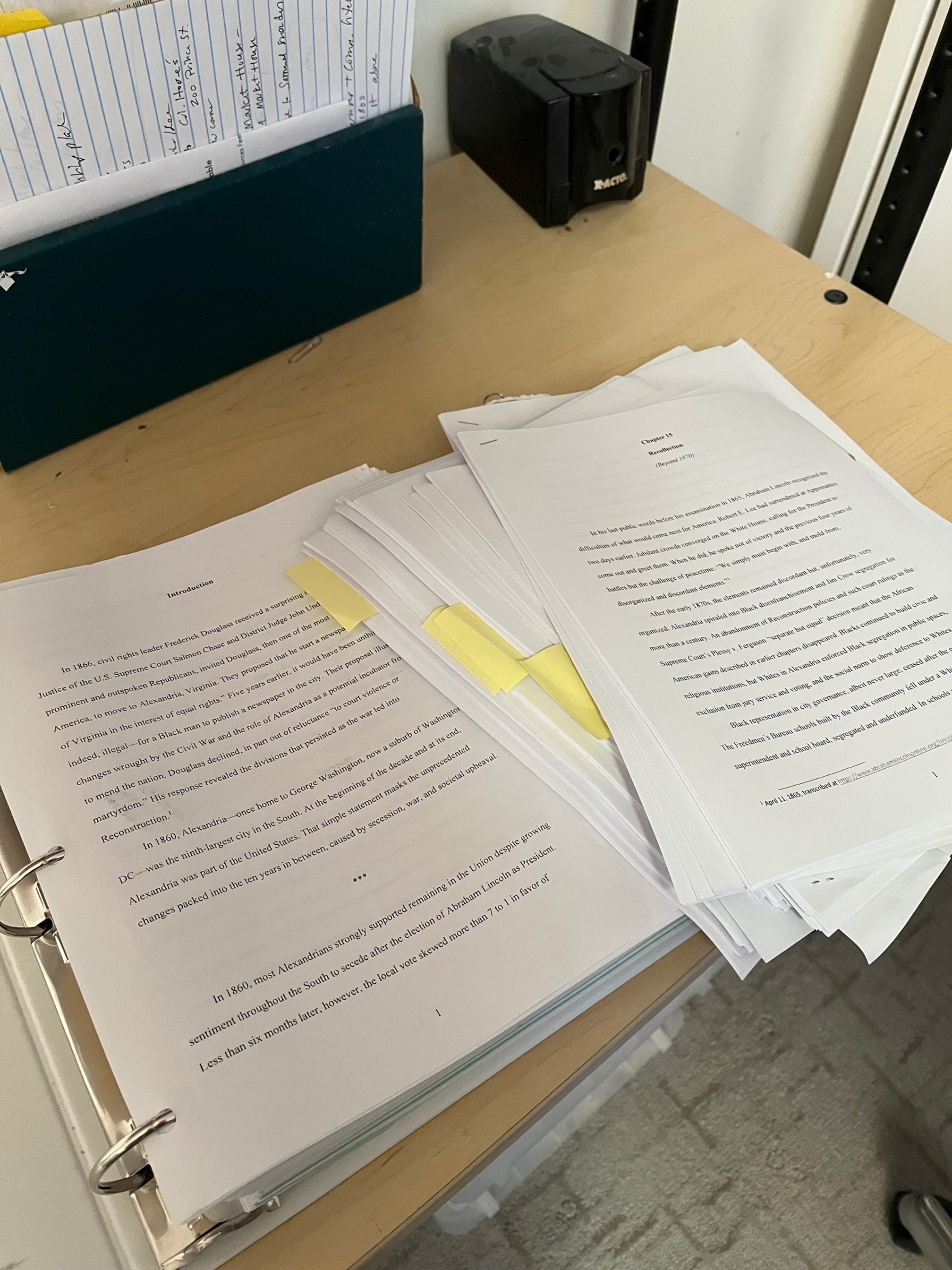Deadline Met.
/When I posted that update a few days ago, a colleague responded, “Two of the most beautiful words in English.”
I have a long way to go until I (hopefully) get to open that box to see bound books inside, entitled (or perhaps modified?) Alexandria on Edge: Civil War, Reconstruction, and Remembrance on the Banks of the Potomac. When I submitted my text and image files, the editor wrote, “Congratulations on finishing your first draft.” It’s about the eightieth draft, but who’s counting?
The manuscript goes on to two peer reviewers. I expect a lot of comments to respond to. It will be copy-edited, laid out with photos, indexed, reviewed at various stages. Or not to get too far ahead of things—I hope I have to deal with all these steps.
For now, I’m doing a lot of picking up the strands of life that I let unravel as I neared the deadline.
Including, before I forget, a few ideas to share about how I got to that point.
Use the proposal to your advantage. As you may already know, most nonfiction books are sold with a proposal rather than a completed manuscript. If you have an idea that’s been kicking around your head for awhile, the temptation is to write the darn thing. Be patient. A proposal is your friend. You have to explain the idea in a simple and compelling way, organize the idea in an annotated table of contents, and figure out the appeal of the idea by comparing it to other published works. My two go-to books: Thinking Like Your Editor by Sue Rabiner and How to Write a Book Proposal by Jody Rein with Michael Larson.
Honor your body clock. I figured out several years ago that my best time to write is in the morning after breakfast. (That’s what I am doing right now.) Unless required, no appointments made before noon. Email turned off. Routine tasks pushed to the afternoon or evening. Your best time may differ, but guard it once you have figured it out.
Push forward and double back. Once I started drafting the text in earnest, I started at the beginning and worked my way to the end. At two points, I took big breaks, printed out, read what I had—around the middle (when the Civil War chapters end) and at the close. Then I reviewed the whole, finding holes and duplicative passages. Big exception: I wrote the Introduction almost at the very end. By then, I wrote it quickly and it was one of the sections with the least revising.
I am still a Hard-copy gal.
Ask for feedback. I had six “beta” readers. If you don’t know that term, they are not editors or fact-checkers, but people who offer to read to identify problems based on their experience and perspectives. My team included several people with deep knowledge of parts of my subject but also people without this knowledge who could point out confusing or boring parts.
Let it go. I could have turned in the manuscript a few weeks earlier. One more point? One more source? I could still be noodling with it. A lesson gained a few years ago, when I attended a talk by Michael C.C. Adams, author of Living Hell: The Dark Side of the Civil War (yes, I know, not the cheeriest of topics). He mentioned a few relevant things he learned after publication of the book, thus he could not include. That was a lightbulb moment for me—if it happens to him, it’s okay if it happens to me.
Make it speak. This was a line from my writing colleague Lauren Arrington as she was finishing her own manuscript, another history with contemporary relevance. The current situation charged her writing, she said. At the time, I was struggling with the last chapter and conclusion, both of which aim to show why the Civil War and Reconstruction are relevant today. I wrote “MAKE IT SPEAK” on a post-it note and put it above my computer.
What happens next? I will let you know!


